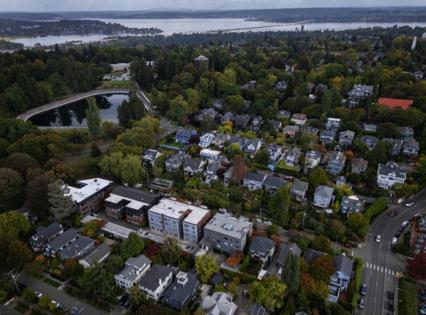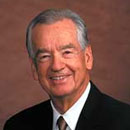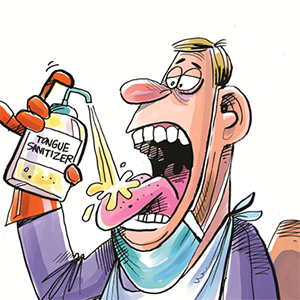In Washington, cleaning up mold in rental housing is complicated
Published in Business News
It’s cozy season — a time when people keep out the chill by shutting windows, curling up on the couch with a steaming mug of tea and switching on a space heater. But that can invite an unwanted house guest — mold.
Mold is a common problem in Washington, where rainy weather creates the ideal conditions for spores to grow and thrive. If it appears in your home, it needs to be cleaned up quickly before it gets out of control. But in rental housing, whose responsibility is it to clean it up — landlords or renters?
In Washington, it’s complicated.
The state does not have a specific mandate that landlords need to remove mold in rental housing. In fact, landlords don’t even need to disclose existing mold in rental housing to a new tenant.
The onus is mostly on the tenant to prove they didn’t cause mold — which can be challenging, lawyers say.
Generally, if plumbing or structural leaks cause the mold, the landlord is required to fix the leak. If condensation causes the mold, it’s up to the tenant to clean the mold and ventilate the housing, such as turning on the fan in the bathroom, using a dehumidifier or opening windows or doors.
No part of Washington law explicitly compels landlords to remediate mold — just the underlying issue.
So, if renters complain about mold to landlords or to other agencies, they likely won’t receive a response, said Elizabeth Powell, a senior staff attorney at the Seattle-based Tenant Law Center.
“The minute (renters) say, ‘There’s mold,’ their eyes are going to glaze over,” she said.
Who’s responsible for mold in rental housing?
Washington law requires landlords give their tenants information on how to control mold when they move in, but tenants still typically are in the dark about how to address persistent mold problems themselves, lawyers say.
“We get calls from people every single day that are saying, ‘I’m living in a place full of mold. What do I do?” Powell said.
The law does not provide a straightforward answer.
Some landlords will take care of mold in addition to fixing the leak or structural issue that caused the mold. That’s what they should do, anyway, said Sean Flynn, president of the Rental Housing Association of Washington.
Flynn, who mostly represents small landlords, said the duties of Washington landlords are clear to him.
He believes if a leak or structural issue caused the mold, the landlord should remove the mold in addition to fixing the underlying issue. If mold is caused by a tenant failing to properly ventilate the housing, the tenant should clean up the mold.
But the law technically doesn’t require landlords to clean up mold at all.
Additionally, tenants can struggle to identify what caused the mold, lawyers say.
Sometimes, it is easy. If mold forms near an obvious leak, the onus is on the landlord to fix it. If mold is on a bathroom ceiling, the tenant probably needs to ventilate the bathroom better during showers.
But other times, the source of mold is not so identifiable. For example, mold on an interior wall could be condensation or a roof leak on the inside of the wall.
Professionals can help, but mold inspection or removal services can cost hundreds to thousands of dollars, depending on the scope of the issue, according to online quotes.
Lawyers recommend reaching out to landlords in writing about suspicions of a leak, even if a tenant isn’t 100% sure, explaining the mold’s persistence despite steps taken to reduce condensation. Tenants should keep a copy of any attempt to inform their landlord of a problem.
If a landlord is responsible, what should tenants do?
Tenant attorneys commonly receive complaints about landlords refusing to clean up mold or fix leaks causing mold. The first question lawyers say they will ask is, “Have you written to your landlord?”
Washington law requires tenants to notify landlords of any substandard or dangerous living conditions in writing. Powell always tells her clients to send a letter in addition to emailing a landlord.
Tenants must stress the source of the mold in that letter, she said.
If a landlord doesn’t respond and fix the issue, tenants have a few options.
They can reach out to their local code enforcement officials, who can compel a landlord to fix housing code violations, a city of Seattle spokesperson said.
Like with complaints to landlords, tenants must emphasize the source of the mold. The Washington State Department of Health website says city building code enforcement officials won’t respond to mold complaints.
If a landlord does not fix an issue causing mold “within a reasonable time” after a tenant has sent a written complaint, Washington law allows a tenant to break their lease without penalty. But lawyers don’t recommend withholding rent while still occupying the rental.
“That, in this state, will get you evicted,” Powell said. “And you can go to court and say, ‘There’s mold’ until you’re blue in the face, and the court is going to say, 'I don’t care. You didn’t pay rent.’”
While landlords have a duty to keep rental units habitable, Washington law almost always does not allow a tenant to stop paying rent when repairs aren’t fixed.
The law does allow the tenant to deduct the cost of repairing something the landlord should have taken care of from their rent for two months, but that’s still risky, lawyers say. The landlord may disagree and serve the tenant with a pay-or-vacate notice.
Washington law also requires tenants to be up-to-date on rent and utilities in order to make repair demands. The exception would be when a court finds that the conditions in the unit have diminished the rent to such a degree that, at the diminished value, the tenant is legally current on rent, said Carl Snodgrass, an attorney with the Northwest Justice Project.
“Unfortunately, the likelihood that (mold) is going to be adequately addressed and not billed to the tenant is pretty low,” Snodgrass said. “The bottom line is (mold) is not something that is clearly regulated, so it's vulnerable to being exploited by landlords.”
If a tenant is responsible, what should they do?
No matter who caused the mold, it’s important to address it quickly, said Amanda Wisner, with the mold removal company Seattle Mold Solutions.
In some cases, a tenant allowing the mold they caused to grow out of control can be grounds for eviction. Living in mold can also cause health problems, especially for people who are allergic to mold.
Mold exposure can irritate the eyes, skin, nose, throat, and lungs of both mold-allergic and nonallergic people, and cause asthma attacks in people with asthma who are allergic to mold, according to the Environmental Protection Agency.
Some people panic when they see black mold, but not all black mold produces toxins, Wisner said. It’s difficult to tell different molds apart with the naked eye.
Renters can clean small patches of mold using soap and water or bleach and water, according to the Centers for Disease Control and Prevention, but they need to take certain precautions. Experts recommend opening a window and wearing rubber boots, rubber gloves and goggles during cleanup.
How can tenants avoid mold?
Even though tenants may have trouble getting mold issues addressed, tenants themselves are a frequent cause of mold, Wisner said.
Leaks or water damage cause mold, but so does cooking, showering or even breathing.
“Just existing inside is going to raise your humidity,” she said.
She’s often worked on units with mold clearly caused by tenants, especially during the winter when people shut windows and doors tight all the time. That combined with the use of portable heaters causes indoor humidity to spike and mold to flourish.
She recommends buying a small humidity monitor. Any time the humidity goes above 50%, tenants need to open a window or turn on a large dehumidifier.
Powell, the lawyer, recommends seeing a rental in person before moving in to avoid taking over a former tenant’s mold problems. Washington law doesn’t require landlords to disclose a unit’s mold history, leaving tenants to prove they aren’t responsible when mold appears.
A prospective tenant should smell for a musty odor, she said, and check the usual places mold grows — bathroom walls, in kitchens, within air ducts, under carpets, behind furniture, near laundry rooms, in basements and in attics.
Snodgrass said a lack of regulation means a landlord could hide a history of mold in the unit and then charge the tenant for cleaning it when it reemerges.
“Proving the history of mold is often nearly impossible for a tenant who wasn’t there when the mold problem started,” he said.
©2025 The Seattle Times. Visit seattletimes.com. Distributed by Tribune Content Agency, LLC.












Comments